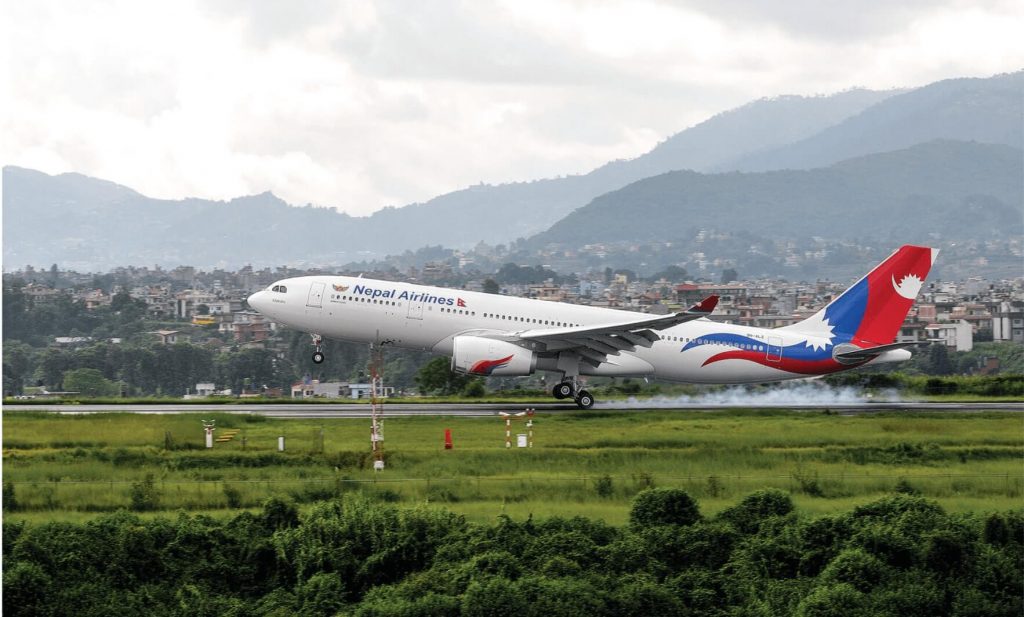
Through a revised “EU Air Safety List,” which is a list of non-European airlines that do not meet international safety standards and are subject to an operating ban or operational restrictions within the European Union, the European Commission has chosen to maintain its ban on Nepali airlines.
According to the EU’s statement posted on its website, “The unanimous decision of aviation safety experts from Member States who convened in Brussels on November 19–21 under the auspices of the EU Air Safety Committee served as the basis for today’s [December 13] update to the EU Air Safety List.”
International safety standards, particularly those established by the International Civil Aviation Organization (ICAO), serve as the foundation for decisions made under the EU Air Safety List.
“Ensuring the greatest degree of flight safety for Europeans and all other passengers is the cornerstone of the Commission’s aviation safety policy.”
Due to insufficient safety oversight by the national aviation authorities, 129 airlines are prohibited from operating in the EU.
Pakistan International Airlines (PIA) was exempted from the commission’s 2020 third-country operator sanctions.
According to the EC, the Pakistan Civil Aviation Authority and the PIA have significantly enhanced their monitoring and safety performance. The EU has officially permitted PIA to resume operations.
With the most recent ruling, Nepal has now been in the EC’s bad graces for 12 consecutive years.
According to the commission, an airline may submit a request to the European Commission directly or through its civil aviation authority if it believes that it should be taken off the list because it satisfies the applicable safety criteria.
The airline must show the EU that it and its oversight body are capable of enforcing international safety standards in order for the ban to be lifted.
The evidence presented by the airline and/or its supervisory body will subsequently be evaluated by the European Commission services. The commission will suggest the removal to the EU Air Safety Committee if the evaluation is favorable.
Over the course of more than 15 years, international aviation watchdogs have questioned the civil aviation body’s dual purpose and encouraged Nepal to divide the organization into two entities: a regulator and a service provider in order to improve flyer safety.
Nepal’s aviation sector is ailing, though, and the government has showed no desire in doing so.
The European Commission prohibited all Nepali airlines from operating flights into the 28-nation EU in December 2013.
The EU Air Safety List is run by the EU. This blacklist of commercial airlines that are either prohibited or severely restricted from flying in European airspace is updated on a regular basis.
No Nepali airlines are operating in EU airspace, according to an aviation expert the Post spoke with. “However, it eventually impacts travel to the nations the EU questions.”
There are three primary objectives for the EU Air Safety List. Achieving the greatest safety standards in European skies is the first step.
The second is giving Europeans access to publicly accessible information so they may choose wisely which airlines to book with when they are traveling outside of the EU.
The third is giving nations, airlines, or aviation agencies that have been placed on a blacklist a way to improve their safety records and be removed from the list.
Because it encourages nations with safety issues to take action before a ban under the EU Air Safety List is required, the list has grown to be a significant preventive instrument.
“But reforms don’t happen easily for a country like Nepal, where corruption is widespread and institutionalized,” the unnamed expert stated. “Nepal has continuously disregarded the reforms that international aviation watchdogs have recommended.”
The International Civil Aviation Organization, the United Nations’ aviation watchdog, formally requested in August 2022 that Nepal divide the civil aviation organization into two organizations.
For the past ten and a half years, the separation has been a work in progress and is a key component of the organizational reform agenda.
The action was required to “guarantee that operators, service providers, and the regulatory body have distinct powers,” according to the ICAO’s audit report on Nepal.
The ICAO, which develops rules for aviation efficiency, safety, and security worldwide, wrote to Nepal for the first time to request that it carry out the functional separation. This topic is a top priority for ICAO.
Two months after they were introduced, the Cabinet’s bill committee approved the civil aviation bills last month, enabling the administration to introduce the long-awaited legislation during the winter session of Parliament.
The bills had been put on hold by the government of Pushpa Kamal Dahal at the time.
After being put on hold for more than a year by the Dahal administration, the draft civil aviation measures were finally added to the KP Sharma Oli Cabinet’s agenda on September 6.
The two biggest parties in Nepal, the CPN-UML and the Nepali Congress, made the bold decision to divide the nation’s aviation organization into two organizations: a regulator and a service provider.
Two months after they were introduced, the Cabinet’s bill committee approved the civil aviation bills last month, enabling the administration to introduce the long-awaited legislation during the winter session of Parliament.
Since 2007, initiatives to eliminate the regulator’s dual position have been put forth by successive governments. Despite being essential to guaranteeing safe flying in Nepal, the laws have stalled.
Nepal’s aircraft safety record is appalling; in the last three years, there have been eight crashes, six of which have been fatal, killing more than 100 people.
The government’s tardiness in enacting the new bill, which seeks to create an independent civil aviation regulator, has alarmed lawmakers.











